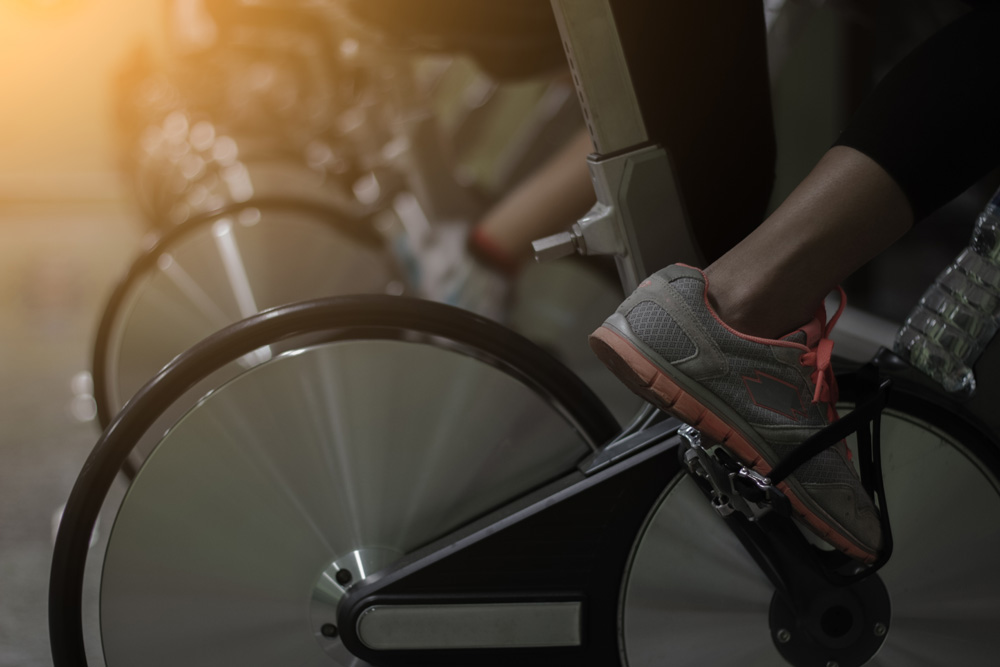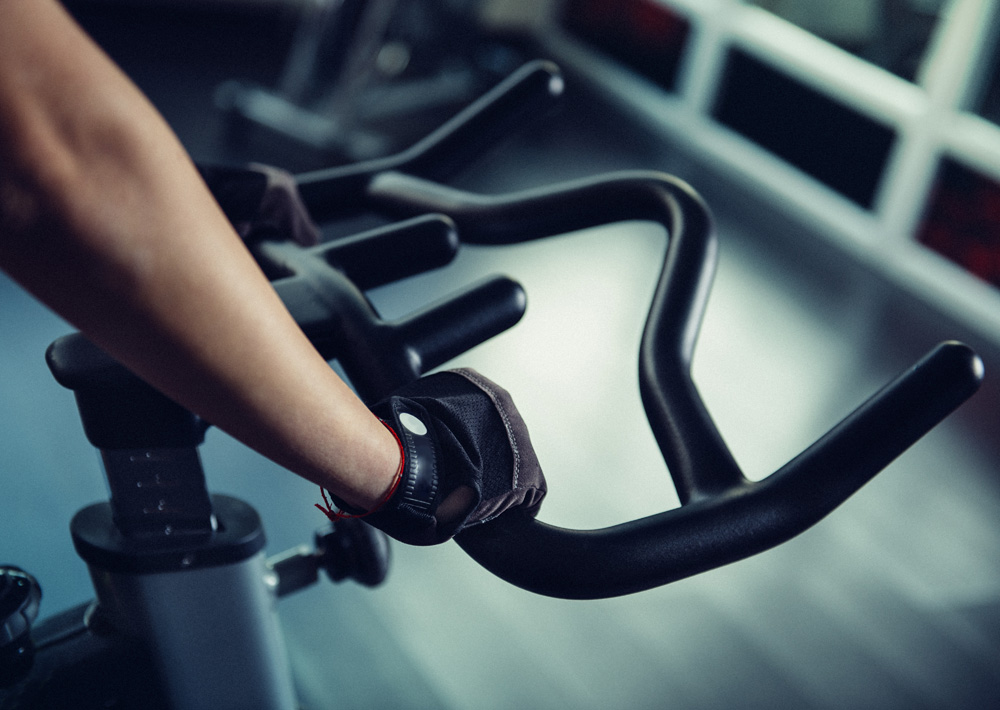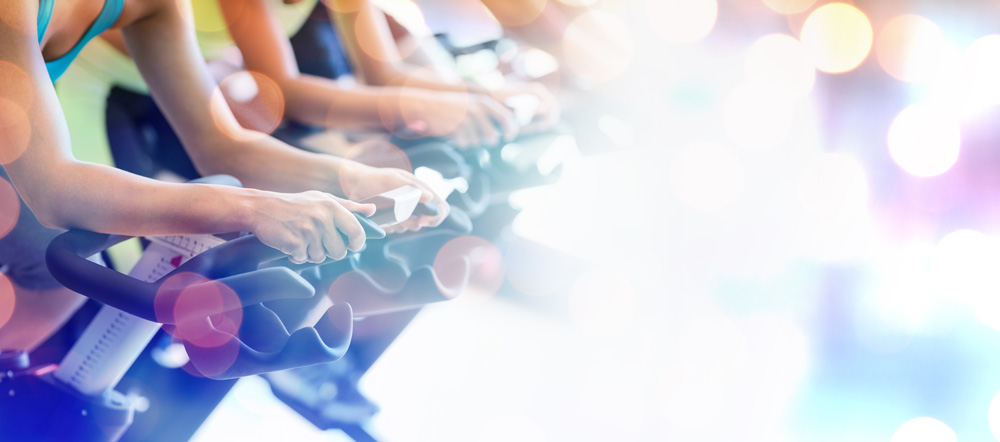
Imagine a whole bunch of exercise bikes lined up in a gym with riders dripping sweat as they spin the pedals at a rapid pace. The lights are dim, the music is pumping and an instructor is calling out commands from the lead bike. If you’ve been to a spinning class you’ll know exactly how exhilarating it can all be.
Spinning 101
Just like other workout classes, instructors guide these indoor cycling lessons, available at fitness clubs everywhere, through a series of phases, from a warm-up to challenges that build up to a period of peak effort followed by a cool down.
A typical class sees participants through routines that are designed to simulate terrain and situations similar to riding a bike outdoors; all that’s missing is the scenery. Some of the movements and positions include hill climbs, sprints and interval training.
Your Way, All The Way
One of the major advantages of indoor cycling is that participants determine their own levels of exertion. It’s your workout. You control everything from your speed and resistance to your intensity level, so it can be as easy or as challenging as you want it to be.
The intensity of your workout is influenced by a couple of things, like the pedal rate, the resistance of the bike’s flywheel and your body position. Like many things in life, you will get out of it what you put into it. Some people might need an extra push to stay motivated, and that’s why it’s important to find a good instructor who uses stimuli like music, visualisation and enthusiastic coaching to lead students through a ride that best suits their fitness level and goals.

The Wheels of a Wellbeing Fortune
With the right guidance and a strong will, you’re likely to end up having a vigorous workout on your stationery bike. The classes are a great way to stay in shape, especially when the weather is bad. “Spinning is one of the best cardio exercises to slim down, tone the legs and burn calories,” says Diana Safadi, group fitness and spinning instructor at Exhale Gym in Beirut. “A 45-minute spinning workout may allow you to burn around 500 calories.” Indoor cycling also strengthens the muscles of the lower body. It tones the abs, quadriceps, hamstrings and glutes, as well as benefiting the back and hips. Plus it toughens the heart. The classes are low-impact, so they’re very suitable for people who want to balance out higher-impact exercises (like running) or for people who have some joint problems. What’s more, classes can be very exhilarating. “Spinning classes are so much fun and full of life due to the loud music. They’re a great way to relieve stress,” says Safadi.

Watch Out
If you’re not exercising correctly or you’re positioned wrongly, injuries can occur, with lower back and knee problems being the most common. To avoid injury and maximise comfort, it is important to make sure your bio-mechanical position is right, as well as the seat position and height. If you’re a beginner, it’s important to remember it will take a few weeks to build up your fitness level to be able to work hard the whole class. Tired muscles and saddle soreness are two common grievances novices suffer from.
Does Spinning Really Cause Bulky Thighs?
So many people believe spinning leads to thick quads, but that’s not necessarily the case, just take a look at all those lean-legged spinning instructors! In fact, recent studies have shown that women actually lose fat from their guts and lower bodies when they cycle often. In other words, your thighs are likely to look smaller. Thighs may appear a bit plumped but that’s usually temporary and due to more blood flow and higher blood pressure in the muscle beds as well as the extra water the body is making. However there are some factors to keep into consideration:

Diet: Cycling doesn’t make your legs bigger, but eating the wrong foods does. Even though you’ve torched all those calories, it’s still advisable to stay away from the bread and pasta.
If you’ve Cycled Before: Your starting point on a spin bike plays a big role in whether and how you build muscle. Someone who’s never cycled or done much exercise will gain muscle from it, while a very sporty person may see the opposite effect.
Your Body Type: Body type is a factor in any workout you’re doing. Consider the three main body types—endomorphs, ectomorphs, and mesomorphs—and which you might be.
Your Genes: The size of your quads is highly linked to genetics.
Dealing with A Boost in Appetite: New riders may experience a large calorie shortfall and lack proper recovery, resulting in an unfamiliar level of hunger. It’s important to eat the right foods to stay full and ensure muscle recovery.
Using Proper Cycling Form and Riding Correctly: Riding incorrectly not only leads to injury, it may cause unwanted muscle growth too. So when the instructor says use your abs or stop gripping the handlebars, it’s for a good reason!

















